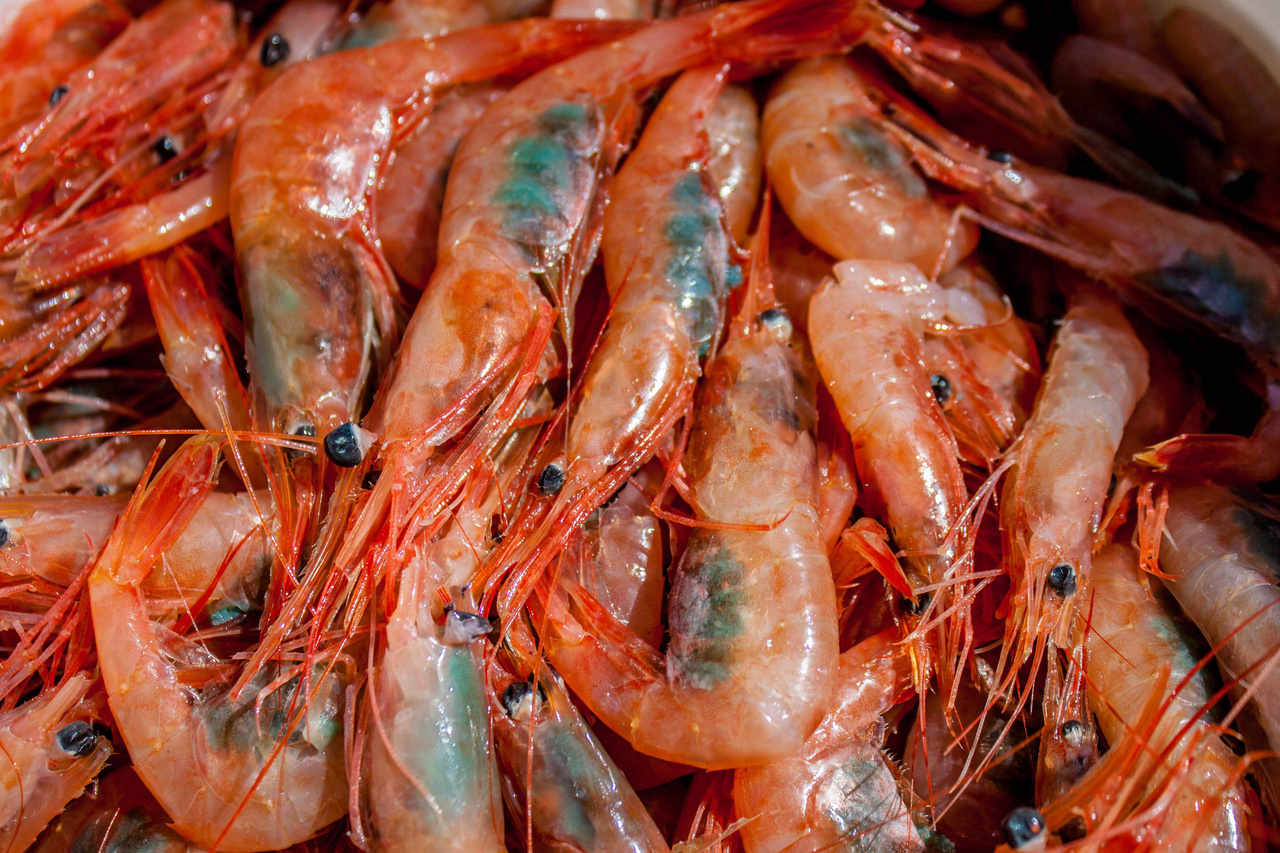Red Blue Green shrimp often face health problems like bacterial infections and poor water quality. Stress and inadequate diet also contribute to their health issues.
Red Blue Green shrimp, also known as Neocaridina shrimp, are popular in aquariums for their vibrant colors. These tiny creatures require optimal living conditions to thrive. Poor water quality, unbalanced diet, and stress are common culprits behind their health problems.
Maintaining a clean tank with proper filtration and regular water changes is crucial. A balanced diet rich in nutrients helps in keeping them healthy. Monitoring their behavior and appearance can help in early detection of issues. Providing hiding spots and a stress-free environment promotes their well-being. Proper care ensures these colorful shrimp live a healthy, vibrant life.
Introduction To Shrimp Health
Shrimp health is crucial for a thriving aquatic environment. Healthy shrimp ensure a balanced ecosystem. Understanding shrimp health helps prevent diseases. It also promotes longevity in your shrimp population.
Importance Of Shrimp Health
Maintaining shrimp health is essential for vibrant aquariums. Healthy shrimp are active and colorful. They contribute to the overall beauty of your tank.
- Healthy shrimp exhibit bright colors.
- They are more active and playful.
- Good health reduces the risk of diseases.
Unhealthy shrimp can affect other tank inhabitants. Monitoring health signs is vital. Early detection of issues prevents widespread problems.
Overview Of Red, Blue, Green Shrimp
| Shrimp Type | Color | Common Health Issues |
|---|---|---|
| Red Shrimp | Bright Red | Bacterial infections, molting problems |
| Blue Shrimp | Deep Blue | Parasitic infections, stress |
| Green Shrimp | Emerald Green | Fungal infections, poor water quality |
Each shrimp type has unique health needs. Red shrimp are prone to bacterial infections. Blue shrimp often face parasitic issues. Green shrimp need clean water to thrive.
Monitoring these common issues ensures shrimp health. Regular tank maintenance helps keep shrimp healthy. Proper feeding also plays a crucial role.

Credit: www.theshrimpfarm.com
Common Health Issues
Red Blue Green Shrimp are beautiful but can face health problems. Understanding these issues helps keep your shrimp healthy. This section covers common health issues.
Bacterial Infections
Bacterial infections are a major threat to shrimp health. These infections can cause lethargy and color changes. Look for white spots or cloudy eyes.
Maintain clean water to prevent bacterial growth. Use a filter and test water regularly. Healthy water means healthy shrimp.
Antibiotics can treat bacterial infections. Consult a vet for the right medicine. Always follow dosage instructions.
Parasitic Infestations
Parasites can harm shrimp by living off their blood. Common parasites include Vorticella and Scutariella. These parasites cause stress and poor health.
Signs of parasitic infestations include scratching and irregular swimming. Use a magnifying glass to spot tiny parasites.
Quarantine new shrimp to avoid spreading parasites. Treat infested shrimp with antiparasitic medications. Ensure proper dosage to avoid harm.
| Health Issue | Symptoms | Treatment |
|---|---|---|
| Bacterial Infections | White spots, cloudy eyes, lethargy | Antibiotics, clean water |
| Parasitic Infestations | Scratching, irregular swimming | Antiparasitic medications, quarantine |
By understanding these common health issues, you can better care for your shrimp. Regular monitoring and proper treatment can ensure their health.
Symptoms To Watch For
Monitoring the health of your Red Blue Green Shrimp is crucial. Early detection of health problems can save your shrimp. Here are the symptoms you should watch for.
Physical Symptoms
Physical symptoms are the easiest to spot. Look for these signs:
- Discoloration: Shrimp turning pale or having dark spots.
- Broken Antennae: Antennae that are damaged or missing.
- Shell Issues: Cracked or thin shells.
- Fungal Growth: White or fuzzy patches on the body.
Behavioral Changes
Behavioral changes can also indicate health issues. Watch for these behaviors:
- Reduced Activity: Shrimp not moving much or hiding.
- Erratic Swimming: Uncoordinated or frantic swimming.
- Lethargy: Shrimp appearing tired and sluggish.
- Loss of Appetite: Shrimp not eating or ignoring food.

Credit: www.fisheries.noaa.gov
Preventative Measures
Keeping Red Blue Green Shrimp healthy requires proactive care. Preventative measures are essential. These steps ensure your shrimp stay vibrant and disease-free.
Water Quality Management
Water quality is crucial for shrimp health. Poor water conditions can stress shrimp and cause diseases. Regularly monitor water parameters.
- Temperature: Keep water between 72°F and 82°F.
- pH Levels: Maintain a pH range of 6.5 to 8.0.
- Ammonia and Nitrite: Levels should be 0 ppm.
- Nitrate: Keep below 20 ppm.
Use a reliable water testing kit. Perform weekly water changes. This helps to maintain a clean environment.
Proper Nutrition
Nutrition is vital for shrimp health. A balanced diet supports immune system strength.
| Food Type | Benefits |
|---|---|
| Algae | Provides essential vitamins and minerals. |
| Commercial Shrimp Food | Offers a balanced nutrient mix. |
| Blanched Vegetables | Rich in fiber and vitamins. |
| Protein Supplements | Boosts growth and health. |
Feed shrimp small amounts multiple times a day. Remove uneaten food promptly. This helps to prevent water pollution.
Treatment Options
Red Blue Green shrimp can suffer from various health problems. It is crucial to know the treatment options available. This section covers two main approaches: medication and natural remedies.
Medication
Using medication can effectively treat many shrimp health issues. Here are some common medications:
- Antibiotics: These treat bacterial infections. Use them carefully.
- Antifungals: These treat fungal infections. Follow dosage instructions.
- Parasiticides: These kill parasites. These are crucial for infestations.
Always quarantine new shrimp before adding them to your tank. This practice prevents the spread of disease. Monitor your shrimp for any side effects from medication.
Natural Remedies
Natural remedies can be effective and safe. They often boost overall shrimp health. Here are some popular natural treatments:
- Garlic: Garlic boosts shrimp immunity. Add a small piece to the tank.
- Indian Almond Leaves: These leaves release tannins. Tannins have antifungal and antibacterial properties.
- Salt Baths: A salt bath can kill parasites. Use aquarium salt and follow the correct procedure.
Natural remedies can be a gentle option for treating shrimp. They often improve water quality too. Always research and follow guidelines for natural treatments.

Credit: www.facebook.com
Quarantine Practices
Quarantine practices are crucial for maintaining the health of your Red Blue Green Shrimp. Proper quarantine can prevent the spread of diseases and ensure the well-being of your shrimp.
Isolation Protocols
Isolation protocols involve separating new shrimp from the main tank. This step is vital to check for diseases and parasites.
Here are some essential isolation steps:
- Set up a separate tank with the same water parameters.
- Keep new shrimp isolated for at least 30 days.
- Monitor water quality regularly.
During isolation:
- Feed the shrimp a balanced diet.
- Observe any signs of illness.
- Perform regular water changes.
Monitoring New Shrimp
Monitoring new shrimp is essential during the quarantine period. This helps in early detection of health issues.
Key points to monitor:
- Check for unusual behavior.
- Look for discoloration or spots.
- Observe eating habits.
Use a table to track health:
| Day | Observation | Action Taken |
|---|---|---|
| 1 | Normal behavior | None |
| 2 | Reduced feeding | Check water quality |
| 3 | Spot on shell | Isolate further, consult vet |
Keep detailed records for each shrimp to track their health progress. This ensures timely intervention if needed.
Long-term Care
Caring for Red Blue Green Shrimp over time requires attention and dedication. Long-term care ensures your shrimp stay healthy and active. Addressing health problems early is crucial. Proper care includes regular health checkups and maintaining sustainable tank conditions.
Regular Health Checkups
Regular health checkups help monitor your shrimp’s well-being. Inspect your shrimp weekly for signs of illness. Look for discoloration, unusual spots, or lack of activity. Early detection of issues can prevent serious health problems.
- Discoloration: Healthy shrimp have vibrant colors.
- Unusual Spots: Spots may indicate infections or parasites.
- Activity Level: Healthy shrimp are active and explore their environment.
Use a magnifying glass for a closer inspection. Check their legs, antennae, and eyes. Ensure their shells are not damaged. If any issues are found, consult a vet specializing in aquatic animals.
Sustainable Tank Conditions
Sustainable tank conditions are essential for shrimp health. Maintain water quality, temperature, and proper filtration. Clean the tank regularly to prevent buildup of harmful substances.
| Parameter | Optimal Range |
|---|---|
| Temperature | 22-28°C (72-82°F) |
| pH Level | 6.5-8.0 |
| Ammonia | 0 ppm |
| Nitrite | 0 ppm |
| Nitrate | < 20 ppm |
Use a water test kit to monitor these parameters. Adjustments should be made gradually to avoid stressing the shrimp. Adding live plants can help maintain water quality. They absorb nitrates and provide hiding spots for shrimp.
- Test water weekly.
- Clean the tank every two weeks.
- Change 10-20% of the water during cleanings.
Providing a balanced diet is also important. Feed them high-quality shrimp food and occasional treats like blanched vegetables. Overfeeding can lead to water quality issues. Feed small amounts twice a day.
Frequently Asked Questions
How Do You Know If Your Shrimp Are Sick?
Sick shrimp show signs like lethargy, loss of appetite, discolored or cloudy shells, and unusual swimming patterns. Check for these symptoms.
Why Do My Blue Shrimp Keep Dying?
Blue shrimp may die due to poor water quality, incorrect temperature, or inadequate diet. Regularly test water parameters.
What Is The New Disease In Shrimp?
The new disease in shrimp is Early Mortality Syndrome (EMS), also known as Acute Hepatopancreatic Necrosis Disease (AHPND). It causes high mortality rates.
What Is The Milk Disease In Shrimp?
Milk disease in shrimp, also known as white muscle disease, causes muscles to appear white and opaque. It’s due to viral infections or nutritional deficiencies. This disease affects shrimp health and quality, impacting the aquaculture industry. Proper management and nutrition can help prevent it.
Conclusion
Maintaining the health of Red Blue Green Shrimp is crucial for a vibrant aquarium. Regular monitoring and proper care are essential. Addressing health issues promptly can prevent major problems. Ensure a clean habitat and balanced diet. Healthy shrimp contribute to a thriving aquatic environment, enhancing the beauty of your tank.
